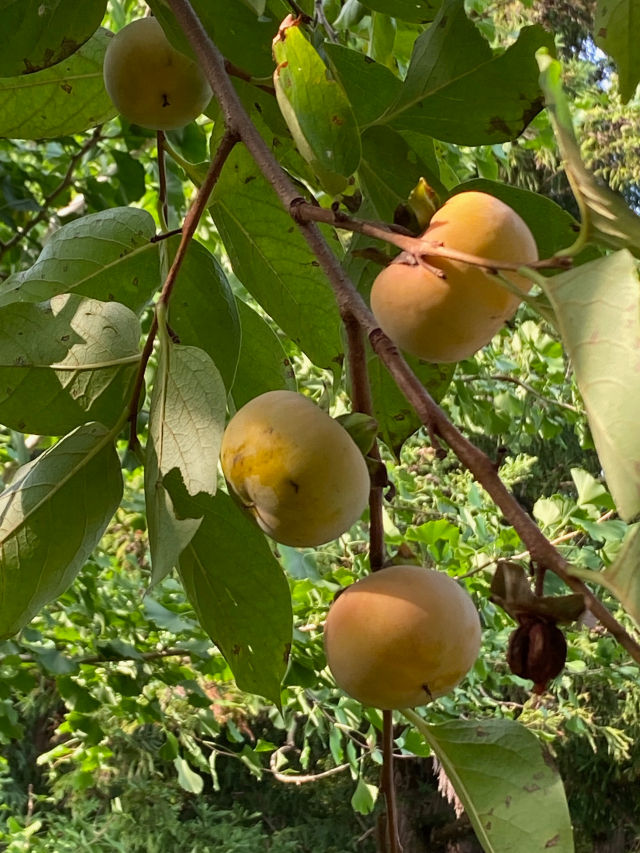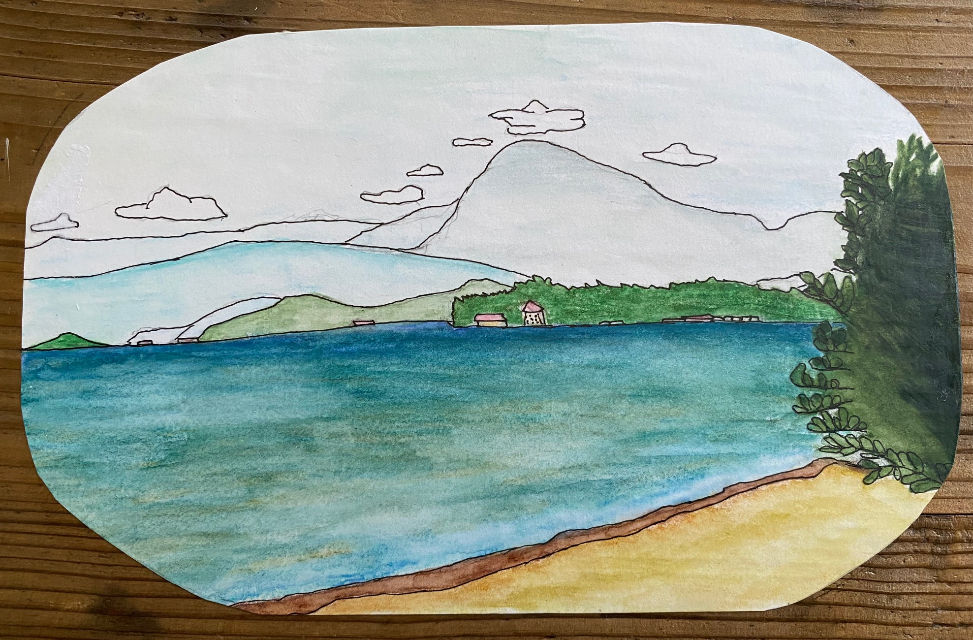WHAT BAMBOO MEANS TO ME
- Rebecca Otowa
- Feb 11, 2020
- 5 min read
In preparation for roof repairs on my house, the carpenter next door came last week to tear down a small lean-to built by my father-in-law, probably around 60 years ago. It was made of found boards, with a stone foundation, and had been used to store poles and stakes needed for the vegetable patch.
I was going to leave him to it, but it occurred to me that if I did, everything would go into his dumpster, and there might be something in there worth saving. So I went to have a look – it was cold, with snow on the ground left over from a few days ago – and as things turned out, I ended up saving almost everything. Living in a centuries-old house, I find myself channeling the ancestors from time to time, especially in matters of housekeeping. They were a thrifty bunch. One of them, or maybe it was the house itself, told me to save the sturdy round pillars, the hand-shaped floor pieces with the bark still on, and a large number of bamboo poles of various ages.
In the Japanese countryside, we live with bamboo. Every well-appointed household in the past had its own bamboo grove, and our family was no exception. Bamboo provides food (bamboo shoots, which shoulder their way up from the ground in April and May), fuel (kindling made from dry leaves and small branches) and building material (poles for making small structures, hanging clothes, and propping things up). With its intricate network of roots threading through the ground, a bamboo grove is also an excellent place to go in an earthquake. We still have two small slivers of land where bamboo grows. Although the ancestors would be appalled at the state of them, we still go there when we need poles or when a nice tender bamboo shoot would hit the spot.
Poles are essential in the garden, and we are lucky we have bamboo available, and don’t have to rely on the metal or plastic ones in the DIY store. In autumn (which is the best time for cutting bamboo – if it is cut in spring, it is too soft and collapses) my husband goes out to the grove with his mattock and cuts poles to my specifications. A meter(or yard)-long pole will hold up a capsicum or eggplant, two-meter-long ones are for tomatoes, and longer ones (up to five meters) are for crosspieces. They also need to be a certain diameter – anything over about 4 centimeters (1 1/2 inches) is too fat to make a good pole. He brings back the smooth green stems with their yellow joints and nodding fronds of leaves at the top, and uses the mattock to chop off the small branches before sawing the poles to the correct size. He cuts a sharp diagonal tip on some of them so they will go into the ground more easily. Then the poles are tied together and stored until they are needed.
When it’s time to make supports for summer seedlings, in May and June, I get my wooden mallet and a bundle of bamboo poles, and spend a morning whacking the poles in next to the seedlings and tying them loosely together. The bamboo will keep the small plants from falling over or being uprooted in high winds or torrential rain. When the summer harvest is done, I take out the plants and carefully save the poles, drying them and tying them up for next time.
How long does bamboo last? If it’s cared for and under cover, a very long time. Some famous bamboo vases used in the tea ceremony are hundreds of years old, as are the tiny carved bamboo tea scoops. When I came to live here as a young wife over 30 years ago, the poles used to hang clothes in the central courtyard were all made of bamboo, and had been there for decades.
At the same time, it grows incredibly fast, so it can be used for short-term projects as well. A bamboo shoot (one that isn’t harvested for eating) grows so fast you can almost see it. You notice it poking out of the ground, barely visible, and a few days later it will be towering over your head. After all, it isn’t technically a tree, but a grass. One example of short-term use in our home is the bamboo containers my husband fashions every August to hold flowers in the graveyard for the annual O-Bon ceremony, when the ancestors come back to visit the living. These are renewed every year.
When I saved the bamboo poles that had been in the small shed, I had to sort them into lengths, and also decide whether they were usable. This is done in several ways. Is the bamboo very light? If so, it is probably rotten and won’t survive energetic whacking with my mallet. Also, what color is it? The lovely smooth greyish yellow that bamboo fades to when it is no longer green is desirable, porous grey is less so. One other criterion I use is, what state are the ends in? Are the diagonal cuts still strong, or has the whole thing splintered from its sojourn in the earth? I ended up saving about three-fourths of the poles I had found. Among them were some that still had a few centimeters of the branches still sticking out in all directions. I saved these too, because they are useful to lay on newly planted beds to discourage the curiosity of cats, also they can be stuck alongside bean or pea plants to provide something for the tendrils to climb on.
As I sorted and tossed, and then tied the bundles together with bits of twine saved from past garden projects (what can I say? The ancestors are always whispering in my ear, saying “That may be useful sometime…”) I felt my fingers moving in their usual gardening dance. Tying things together, especially in summer, is a big part of the work, and after 30 years, my fingers instinctively know when a piece of twine can be wrapped around the bundle once or twice, and how much needs to be left over to tie the knot. This may seem trivial, but of such knowledge is gardening success made.
Last year as I was working outside, I heard the garden tell me two things. This was the first time I had had definite messages come to me. First, it told me about a particular spot which had not been yielding very well the past couple of seasons. It needed to be deeply mulched (with weeds and straw) and allowed to rest until next year. Second, it told me that plastics should no longer be used in the garden. This means that plastic ties and twine are out, as well as plastic poles and supports. Natural hemp twine and bamboo are, of course, still okay.
Most gardeners find the last few weeks of winter very trying. We long to get out and put our hands in the dirt. I imagine being out there in the spring wind, bent over my patch, looking up every so often to see the feathery fronds of bamboo waving softly just across the road.



I learn so much from reading your blogs Rebecca. I hadn’t realised that a bamboo grove was a safe place to go during an earthquake. For someone interested in the elements that is fascinating. It’s important that local knowledge and experience like this is not lost. ❤️
Serendipitously, on the day I read your post, our bamboo hedge on the south side had it’s regular haircut by the garden maintenance man. He had already carted off the waste by the time I read your post but in future I will sort through and keep the longer sticks for Esk. I also remembered the time you hosted Ulana and I. We went to the bamboo grove opposite your place to do a solemn meditation but we all ended up in fits of giggles.
As yet, my visa is being renewed annually, so I don't feel as though I get to put down roots, thought I have a little space for a garden and I will plant some things this year. I want to sink into the earth, put in plants I can watch grow and bloom and fruit. I love the way you are rooted in your life.